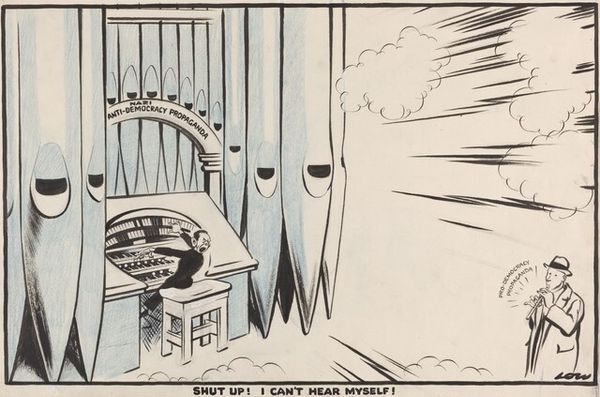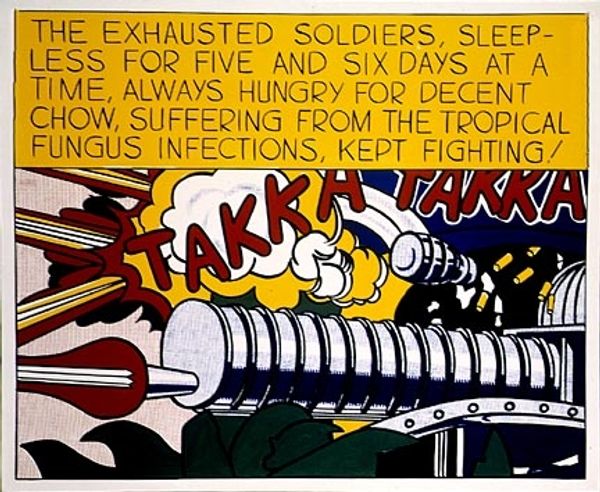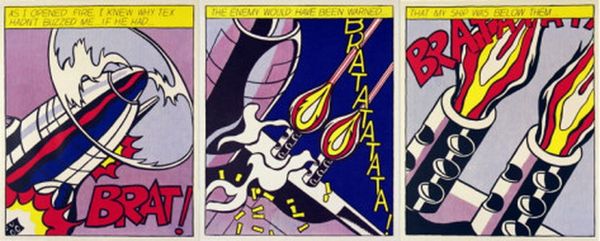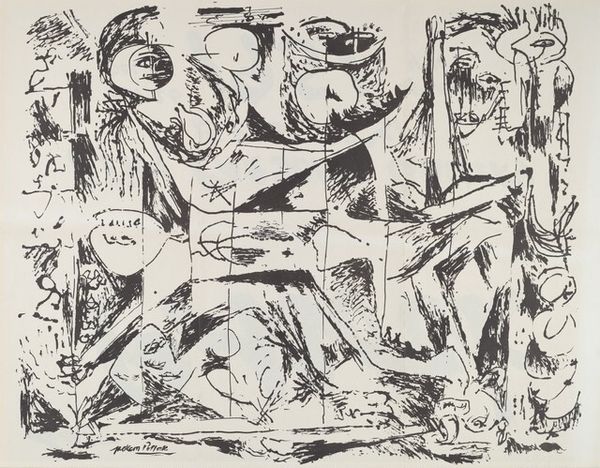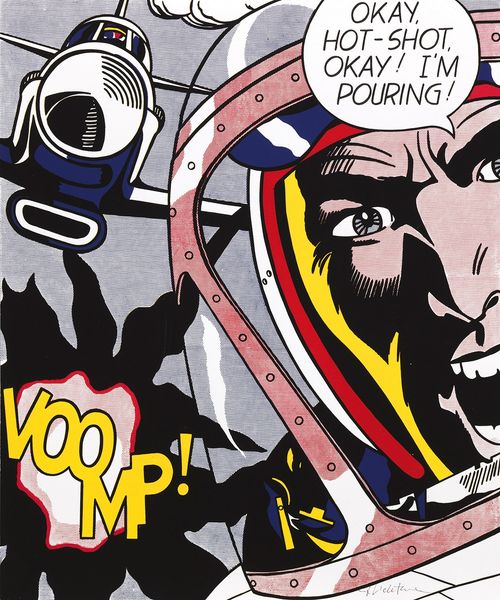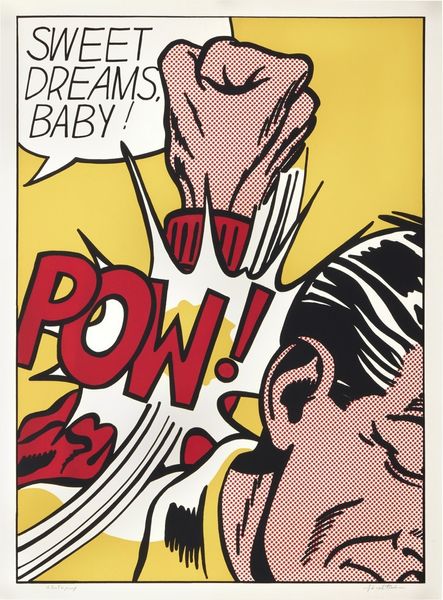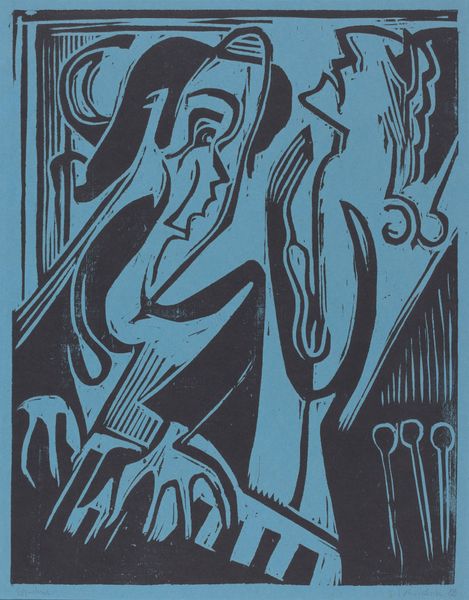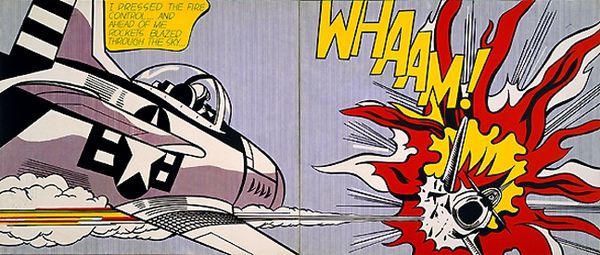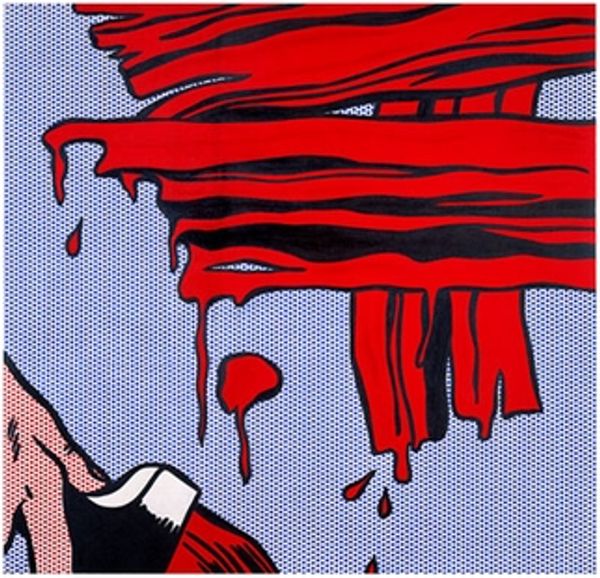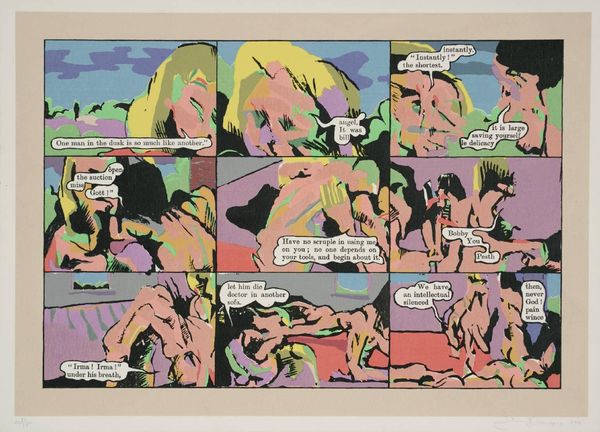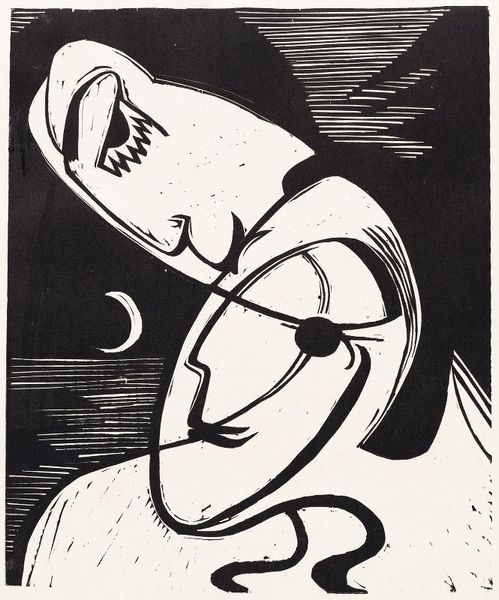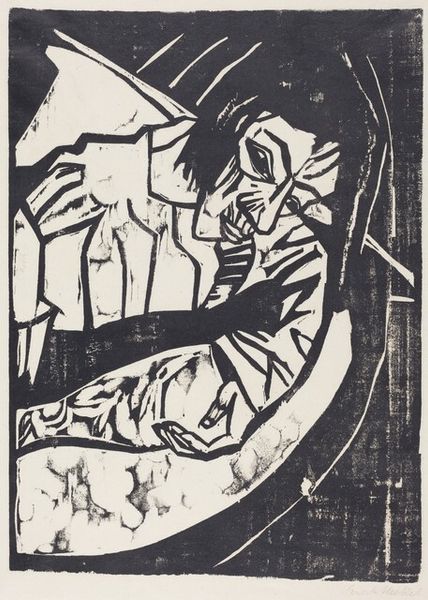
Dimensions: 127 x 152.4 cm
Copyright: Roy Lichtenstein,Fair Use
Curator: Roy Lichtenstein's "Mad Scientist," created in 1963, bursts with a raw, almost manic energy. The piece employs a mixed-media approach, showcasing a vivid portrayal reminiscent of vintage comic book art. What strikes you immediately about this, given its visual style? Editor: There's a potent immediacy, a visual cacophony rendered with stark blacks and yellows against the pale skin tones. The benday dots aren't overwhelming, and this limited palette actually focuses my attention on the process; you see how flat it is, while the subject, clearly mass produced comic strips, scream against this reality, it feels like pop-art that knows its a production more than high art. Curator: Exactly! Lichtenstein’s strategic simplification underscores a powerful engagement with the formal language of comics, and print media, transforming a mundane comic-book panel into a stark exploration of form and line, wouldn't you say? Semiotically, the bold lettering and sharp outlines connote both dynamism and a sense of manufactured drama. Editor: Precisely. Consider how the process impacts our interpretation. Lichtenstein elevates what many might see as disposable material to gallery walls, and challenges notions of labor—drawing by hand this Ben-Day printing, simulating a mass production process is genius and the labor required of it emphasizes the human production, so despite that comic book aesthetic it clearly highlights that it's anything BUT easy to produce. It raises questions about authorship. Is it fine art or just re-worked production line item. Curator: Indeed. The graphic language and vivid colors converge to evoke feelings of suspense. By taking it out of it's source he focuses you on how he presents the original message—the high drama. The composition utilizes stark contrasts to guide our eyes, with that angular composition suggesting that he is actually hiding from the real creative intention: visual form itself. Editor: Agreed, but think of the process as key to our analysis. Lichtenstein isn’t simply replicating; he’s re-contextualizing. He focuses and invites to critically reassess popular culture. His works questions who art belongs to and should even belong in the same conversation as an old master from before industrialism and global distribution chains? Curator: His bold lines and deliberate choice of mimicking a technique of commercial printing—which also highlights their two-dimensionality. I think he creates an interesting tension that elevates the source material to something worthy of aesthetic analysis. Editor: Absolutely, his technique acts as both commentary and craft, demanding that we scrutinize the very nature of making art in a post-industrial age. This prompts the audience to assess what value actually comes from when so many materials exist beyond human skill. Curator: Ultimately, I find Lichtenstein's "Mad Scientist" to be a crucial engagement of graphic language. It asks how art could explore itself in the rapidly shifting paradigms of the 1960s. Editor: For me, this image reflects the ongoing negotiation between production and craft and skill.
Comments
No comments
Be the first to comment and join the conversation on the ultimate creative platform.
